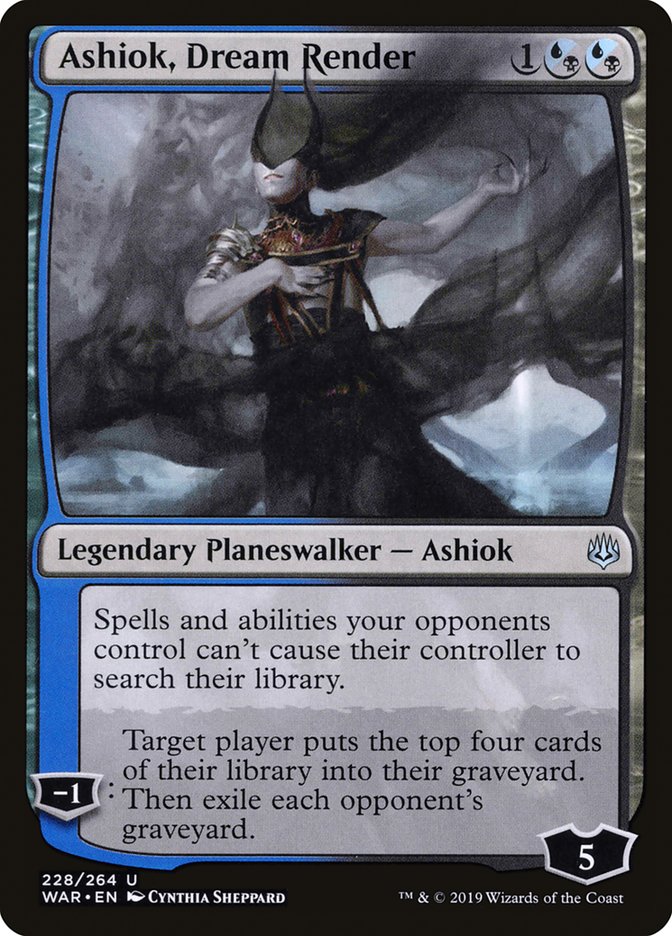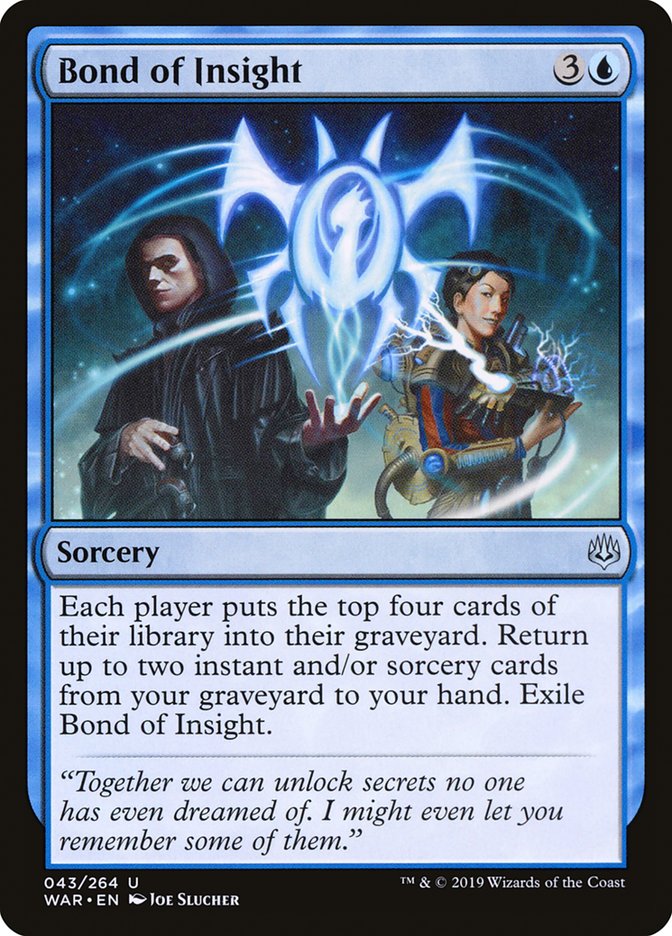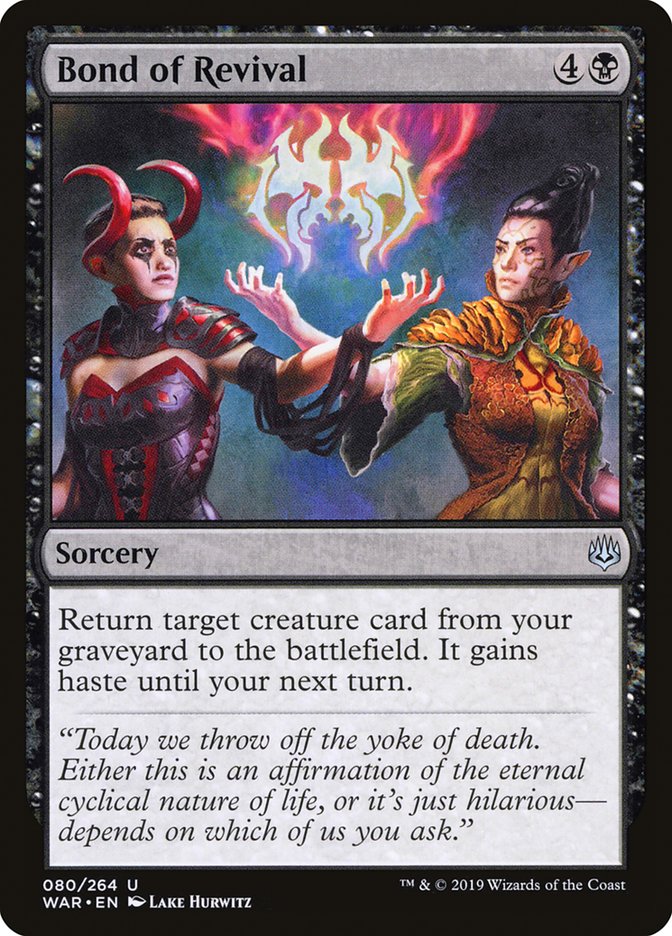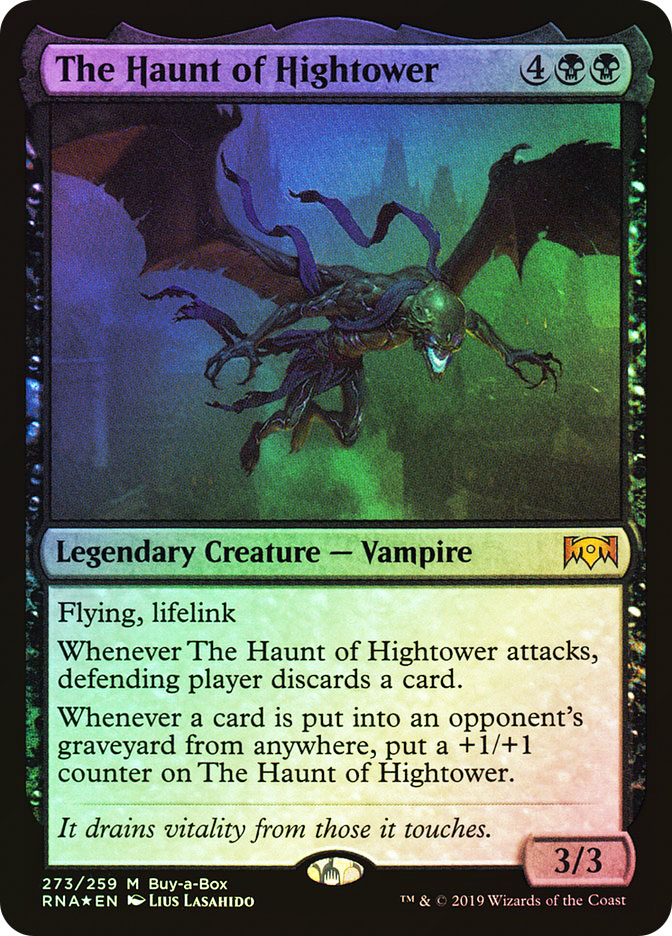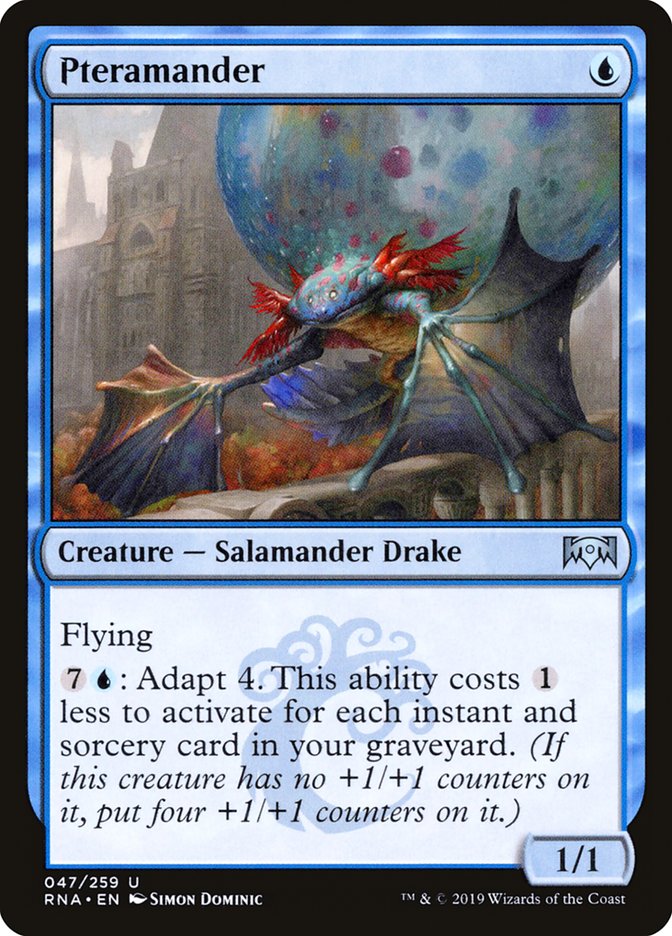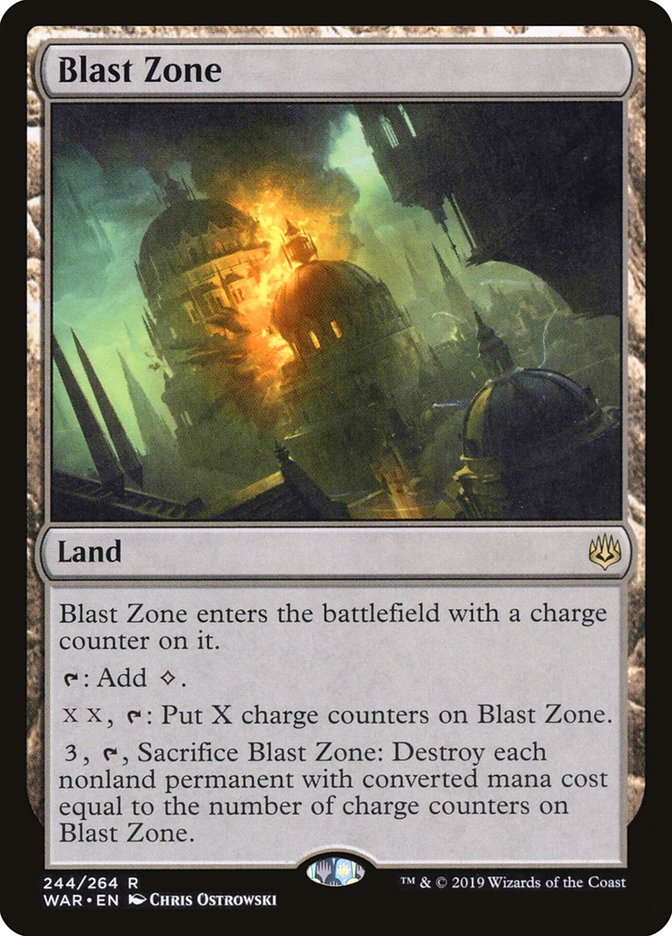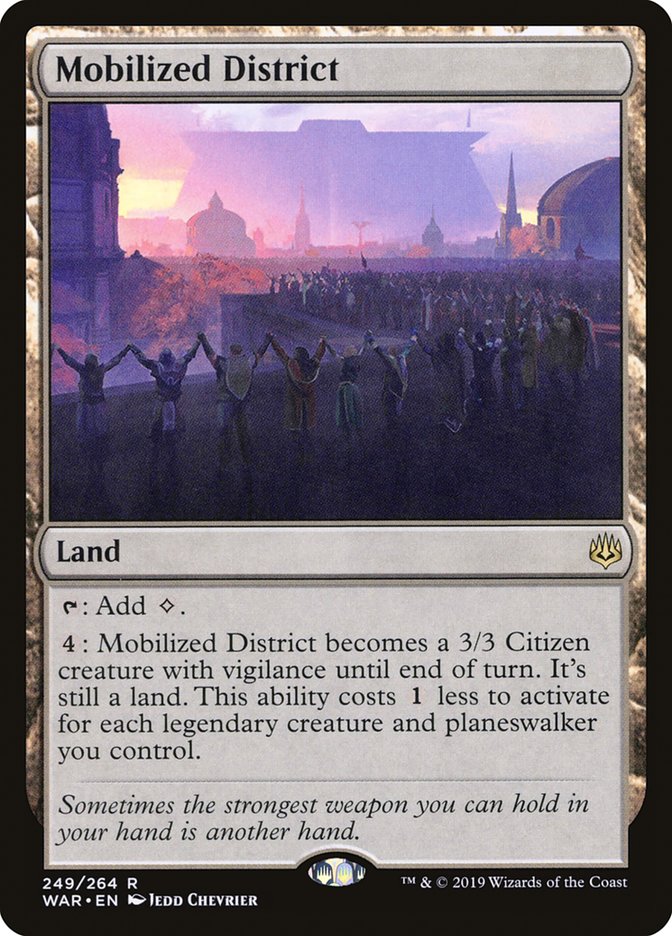My first impression when I read Ashiok, Dream Render was that it can mill twenty cards for the mill deck in Modern, but that it would take a long time. Ashiok would need to stay alive, and, even more importantly, the mill deck doesn’t really want to exile the opponent’s graveyard in this way because they rely on Surgical Extraction and Crypt Incursion, which this disables.
The point of Surgical Extraction here is less often to exile a card from the graveyard and more frequently to remove the remaining copies from the opponent’s hand and library, so it’s weak and doesn’t fit in the place that would want it. But then I realized I was being distracted by the least important text on the card.
Ashiok, Dream Render does four things: stop your opponent from searching their library, mill them, mill you, and repeatedly exile their graveyard. I feel like the option to mill yourself is easily overlooked here, because you might expect that the player who is the target exiles their graveyard, but careful reading shows that you mill any target player and then exile each opponent’s graveyard, regardless of who you milled, so this is actually a powerful graveyard enabler that incidentally attacks your opponent’s graveyard while doing so, making it awesome in potential graveyard mirrors.
Preventing your opponents from searching and exiling their graveyard are powerful countermeasures to a variety of strategies, but also completely irrelevant in many matchups, which is a good start toward relegating Ashiok to the sideboard if it’s going to see play.
In order for Ashiok to make it to a maindeck, you need to be either targeting a very specific metagame or looking to take advantage of the targeted effect of the -1 ability, meaning you’re either playing this in a mill deck – not recommended if your goal is to win competitive matches in any format at this point – or using it as a self-mill enabler, which might actually be a realistic consideration in Standard in a Teshar, Ancestor’s Apostle combo deck, some kind of Reanimator deck with Bond of Revival or Yawgmoth’s Vile Offering (why not both?), or any other deck with enough graveyard payoffs to want a card that will reliably mill eight to twelve cards fairly quickly.
I suppose the other proactive use for the card could be in combination with Kaya, Orzhov Usurper to set up a large -5 for Kaya, but that doesn’t seem like the kind of combo that’s powerful enough to build around so much as a nice synergy that might come up in spots where you want both of these cards for other reasons.
Let’s start by checking out some possible Standard decks that want to use Ashiok’s self-mill potential before moving on to further exploring Ashiok’s application as a sideboard card.
Creatures (30)
- 4 Rona, Disciple of Gix
- 4 Teshar, Ancestor's Apostle
- 4 Diligent Excavator
- 3 Militia Bugler
- 3 Stitcher's Supplier
- 3 Lazav, the Multifarious
- 4 Chamber Sentry
- 1 Plaguecrafter
- 4 Fblthp, the Lost
Planeswalkers (3)
Lands (23)
Spells (4)

This idea is taken from Simon Nielson’s list, which I’ve copied entirely, except for removing Traveler’s Amulet for more lands (because I don’t think the clunkiness of that card is worth it for the triggers) and trimming other cards to make room for Ashiok, Dream Render. Simon wrote an excellent article explaining how this deck works, which is fairly convoluted, so if you haven’t seen this combo before, I recommend reading that.
Creatures (10)
- 1 Demonlord Belzenlok
- 1 Dream Eater
- 1 Doom Whisperer
- 2 Lazav, the Multifarious
- 2 Pteramander
- 2 The Haunt of Hightower
- 1 Massacre Girl
Planeswalkers (3)
Lands (24)
Spells (23)

This Dimir deck uses surveil, Search for Azcanta, and Ashiok, Dream Render to fill the graveyard so that you have options with Bond of Insight and Bond of Revival, which curve into each other nicely.
I’m not sure what the best creature package for reanimating is, but I think The Haunt of Hightower might exceed expectations here, especially if you can find it to return before activating Ashiok. Then you can return it with haste with Bond of Revival, mill your opponent for four with Ashiok to make it a 7/7, attack, make them discard, get another trigger, and hit them with eight lifelinking power. It’s possible that there should just be four of those, but I wanted to start with a more diverse package to see how much having choices helped and then shift toward more of the ones you want to find more often.
Pteramander is included both because it’s strong when you’re milling yourself, so it can get big quickly, and because it’s a great creature to have access to for Lazav, the Multifarious, since Lazav can copy Pteramander, adapt for the four +1/+1 counters, and then become a larger creature but keep the counters, which is another great way to attack with a huge The Haunt of Hightower.
The actual combination of removal spells will depend on the needs of the format. Black has a lot of similar viable options and finding the right mix will take a bit of time and experience, as well as just getting a good sense of what kinds of threats people are playing.
Blast Zone offers an extremely strong incentive to stick to one or two colors so that you can afford to play colorless lands, especially in a deck that doesn’t have a lot of cheap permanents. I think decks that can support this card early will have a pretty big edge, as it’s unbelievably powerful.
There’s also a flashier take:
Creatures (13)
Planeswalkers (8)
- 1 Karn, Scion of Urza
- 3 Liliana, Dreadhorde General
- 2 Jace, Wielder of Mysteries
- 2 Ashiok, Dream Render
Lands (23)
Spells (16)
- 2 Search for Azcanta
- 2 Karn's Temporal Sundering
- 4 Mox Amber
- 1 The Eldest Reborn
- 3 Cast Down
- 3 Yawgmoth's Vile Offering
- 1 Aid the Fallen
Sideboard

This deck is low on interaction but makes good use of Mox Amber and can realistically get Liliana, Dreadhorde General onto the battlefield on Turn 4 just by casting Ashiok, milling yourself, casting Mox Amber, milling yourself again, hitting Liliana in there somewhere, and casting Yawgmoth’s Vile Offering.
Blast Zone and Mobilized District are both frustratingly good in this deck. In the end I went with more Blast Zones, primarily because it’s so good with Soul Diviner, in that it offers easy fuel and Soul Diviner allows you to kill tokens with the Blast Zone. It’s kind of incredible that Karn’s Bastion isn’t even really a consideration in a two-color planeswalker deck. The lands in this set are so powerful.
These decks are all rough but demonstrate that there’s a lot to work with in terms of using the graveyard in this upcoming Standard format.
Looking to older formats, I don’t think Ashiok is a strong enough enabler to make it in Modern or Legacy, but the static ability looks much more impactful there.
What would Ashiok do against various Modern decks?
- Mono-Green Tron: Disable Expedition Map, Sylvan Scrying, and Sanctum of Ugin.
- Dredge: Repeatedly kill the graveyard while milling them to reduce the total number of threats available to them.
- Amulet Titan: Disable Tolaria West, Summoner’s Pact, and Primeval Titan.
- TitanShift: Disable fetchlands, ramp spells, Summoner’s Pact, Primeval Titan, and Scapeshift (basically their entire deck).
- Storm: Repeatedly clear their graveyard while milling to possibly exile their key tutor targets, and disable Gifts Ungiven.
Ashiok also has reasonable applications against a deck like Grixis Death’s Shadow, where it disables their fetchlands and stops them from casting Gurmag Angler, but that might not be enough to justify it.
If you can frequently cast Ashiok on Turn 2, it’s much stronger than if you’re casting it on Turn 3, especially if you’re trying to take advantage of stopping your opponent’s fetchlands. Of these decks, I tend to think Ashiok is best against Amulet Titan and TitanShift, which are most reliant on searching their library after Turn 3. My experience with attempting to use Kaya, Orzhov Usurper against Dredge taught me that most of the time they’ll have creatures on the battlefield to attack your planeswalker, so Ashiok might be too slow to be effective against Dredge unless it’s supplementing other plans to slow them down.
It may be a result of my bias, in that it’s the first application I think of, but I think Ashiok will work best out of the sideboard of Lantern, and I’m sad that it won’t be legal for Mythic Championship London. Amulet Titan and TitanShift are both fairly close matchups, and when a single card turns off this many of their cards, it becomes extremely easy to make sure they draw a blank card every turn. Also, Ensnaring Bridge makes protecting planeswalkers easy, and turning off fetchlands makes it a lot harder for people to try to fight their way out of a Lantern lock, so it might perform adequately in other matchups.
Planeswalkers (1)
Lands (18)
Spells (41)

In Legacy, Ashiok takes on an entirely different dimension, in that it can be cast on Turn 1 with Dark Ritual, potentially turning off all of your opponent’s fetchlands, which might stop them from ever playing the game, and there are even more tutor effects to turn off – Stoneforge Mystic, Green Sun’s Zenith, Crop Rotation, Infernal Tutor, Imperial Recruiter, Natural Order, etc. It’s still probably just a sideboard card, but any deck playing Dark Ritual should consider sideboarding Ashiok.
I won’t hazard a guess on whether this is worth bothering with in Vintage. It seems pretty strong, but you can’t cast it with Mishra’s Workshop, so I’m not sure that it has a place.
All in all, Ashiok the character is one of my favorite planeswalkers, and I’m glad on a personal level to see that Ashiok hates searching libraries as much as I do. It would have been kind of cool to see Ashiok as a Standard powerhouse, but needing to work to use Ashiok might be better than seeing Ashiok everywhere, and it’s cool that it looks like there might be something worth working for.
Regardless of how Standard turns out, I’m excited to get Ashiok, Dream Render as another tool for my Lantern sideboard.


